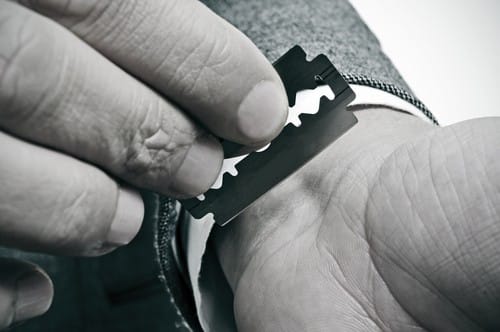We know teens and adults alike are at a greater risk of developing an addiction if drug use begins in early adolescence. But why do children and teens use drugs, to begin with? A common reason given is peer pressure, but the role of peer pressure in the development of addiction is often overstated or misunderstood. The development of addiction in youth is more complex than one factor.
To point to peer pressure alone as a major cause of addiction in teens and young adults ignores a large host of other issues. While most forms of drug use have seen a decline among teens in recent years, some substances have grown increasingly popular, including marijuana and tobacco (via vaping), signaling it’s still important for parents to educate themselves on the effects of drug use, as well as hinting at a continued need to better understand how and why kids get addicted to drugs.
Defining Peer Pressure
Human behavior, as complex as it is, can be boiled down to the product of internal and external factors. These range from innate factors playing a role in the development of our personalities and the emotions we display, to the countless ways in which our experiences and the actions of others imprint on us.
Peer pressure is one of many external factors that have an impact on how we think and act. Peer pressure can refer to both positive and negative influences; negative influences lead to the development of destructive and maladaptive behaviors, while positive influences lead to productive and healthy behaviors.
Peer pressure, or peer influence, only accounts for the influence our social group might hold over us. Peer pressure represents a greater influence among teens than adults, as teens are more motivated to conform to their friends and peers, and less likely to heed the risks associated with potentially dangerous activities, including recreational drug use.
However, research on the topic is conflicting. Studies aiming to determine the effect of peer influence on substance abuse and addiction find different results across sample sizes and age groups, ranging from no support for peer pressure as a significant factor in the development of substance abuse to peer pressure being just one among a variety of social factors for teens using drugs.
Older children, especially teens, are less likely to try drugs due to peer pressure and more likely to choose to use drugs out of their own volition, to satisfy boredom or curiosity, and may select their peers accordingly. A teen’s peer choices play a role in how their personality develops, and what actions they take when faced with the choice to accept or decline drugs. But attention should be paid more to a teen’s home environment and other factors as well.
Parental Influence and Protective Factors
While teens and children spend a lot of time among their peers, family remains a more influential factor in the development of substance use habits. Parents and the quality of their relationship with their children are a greater influence on youth, and teens who are influenced more by their peers than their parents were more likely to use drugs regularly.
Furthermore, among adults with a history of drug use, poor parental relationships, unhappy childhoods, harsh physical punishment, and lack of parental concern are common factors. Healthy parental relationships, on the other hand, correlated with better outcomes and were found to be a significant factor, particularly if parents displayed several effective parenting strategies including:
-
- Parental monitoring
- Parental modeling
- Parental support
- Good communication
- Parental involvement
- Parent-child relationship quality
This does not mean parents play a greater role in their child’s behavior than their peers do in every single case. In most cases, both play a significant role and may influence a teen’s decision to try drugs or avoid them. Parental disapproval of drug use and peer selection also represents as protective factors, and it’s important to note peer pressure is not always overt, but may be subtle, i.e. teens are more likely to respond to trying a drug out if they see everyone else doing it but aren’t pressured into doing so directly.
Other Factors Are Just as Important
Peer and parental influences only represent a fraction of the factors contributing to drug use. Other important external factors remain just as important, including:
-
- The availability of drugs
- Socioeconomic factors
- Traumatic experiences
- The quality and reception of drug education programs
- And even drug advertising
Internal factors include co-occurring mental health conditions, a genetic predisposition towards a specific substance (as teens are more sensitive to a drug if they have a family history of addiction to said drug), and more. The treatment of addiction often requires a thorough understanding of the factors that influenced and continue to impact an individual’s history of drug use.
While drugs themselves encourage repeated use, certain factors make someone more or less likely to relapse after treatment or continue to struggle with addiction. Support networks and treatment plans must be selected and built individually based on these factors as well, as teens affected by certain factors are more likely to respond to one treatment plan than another.
Some of the things parents can do to help reduce their teen’s risk of using drugs include:
-
- Addressing the topic of drugs with a nuanced, balanced, and information-rich approach, avoiding fearmongering or outdated terminology.
- Encouraging your child to call you and ask for a ride home (judgment-free) if they ever find themselves pressured to use drugs at an event.
- Staying involved in a teen’s life, showing interest for their school and personal activities, relationships with peers, friendships, career interests, and more.
- Providing a warm and supportive environment at home, alongside discipline and accountability.
While peer pressure can play a role in how teens develop drug habits, it is far from the only factor, and may often not be the most significant factor in many cases.








